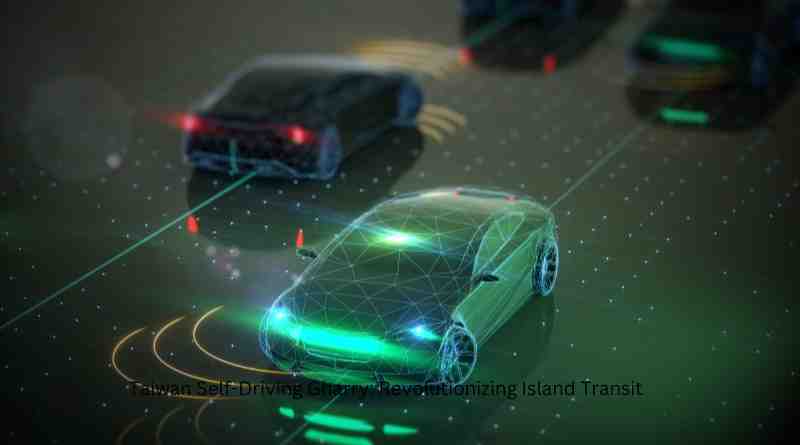In the bustling streets of Taiwan, a revolution is quietly unfolding, one that promises to redefine urban mobility and carve a sustainable path for future generations. The Taiwan Self-Driving Gharry, a state-of-the-art autonomous vehicle, is at the forefront of this transformation, heralding a new era in transportation. This comprehensive article aims to explore the multifaceted dimensions of Taiwan’s self-driving carriages, from their technological underpinnings to the societal impacts, challenges, and the road ahead.
Unveiling the Technology
The Core of Autonomy: At the heart of a self-driving gharry lies a complex array of sensors, cameras, and artificial intelligence (AI) algorithms. These vehicles are equipped with advanced LIDAR (Light Detection and Ranging) systems, radar, and computer vision, all integrated to create a 360-degree perception of the surroundings. This technology allows the gharry to navigate through Taiwan’s diverse urban landscapes, from the dense streets of Taipei to the scenic routes along the East Coast.
Software and Safety: Safety is paramount in the design and operation of Taiwan’s self-driving gharries. The vehicles are programmed with sophisticated algorithms that enable them to make split-second decisions. Whether it’s avoiding a pedestrian or maneuvering through unexpected road conditions, the AI ensures that passenger safety is always at the forefront. Rigorous testing and simulation scenarios are continually run to enhance the vehicles’ decision-making capabilities under various conditions.
The Journey So Far
Early Development and Trials: The concept of a self-driving gharry was initially met with skepticism, but through persistent efforts and technological breakthroughs, these autonomous vehicles have moved from being a futuristic fantasy to a present-day reality. Early prototypes underwent extensive testing in controlled environments before being gradually introduced to public roads. These trials have been crucial in refining the technology and building public trust.
Public Reception and Adoption: As self-driving gharries become more visible on the streets, the public’s perception is gradually shifting. Initial apprehension is being replaced with curiosity and acceptance, particularly among the younger, tech-savvy generation. The government’s endorsement and regulatory support have also played a significant role in fostering a positive environment for adoption.
Societal Impact
Redefining Mobility: The introduction of self-driving gharries is redefining what mobility means in Taiwan. These vehicles offer a glimpse into a future where transportation is not just about moving from one place to another but doing so in a safer, more efficient, and environmentally friendly manner. They promise reduced traffic congestion, lower emission levels, and a significant decrease in road accidents, contributing to a more sustainable and livable urban environment.
Economic and Employment Implications: While the advent of autonomous vehicles brings optimism, it also raises questions about the economic impact, particularly concerning employment. Drivers and individuals employed in traditional transportation sectors might face challenges. However, this shift also opens doors for new job opportunities in technology, data analysis, and fleet management. The government and industry leaders are tasked with ensuring a smooth transition through retraining programs and education.
Challenges and the Road Ahead
Technological Refinement: Despite the significant advancements, self-driving technology is not without its challenges. Ensuring these vehicles can handle complex traffic scenarios, unpredictable weather conditions, and varied terrains continues to be a work in progress. Researchers and engineers are tirelessly working to refine algorithms and enhance sensor capabilities to tackle these challenges.
Regulatory and Ethical Considerations: The legal framework surrounding autonomous vehicles is still evolving. Issues related to liability, insurance, and data privacy are at the forefront of policy discussions. Moreover, ethical dilemmas, such as decision-making in unavoidable accident scenarios, add layers of complexity to the discourse. Establishing comprehensive regulations that safeguard public interest while fostering innovation is critical.
Public Acceptance and Infrastructure: For Taiwan’s self-driving gharries to truly integrate into daily life, public acceptance is crucial. This involves not only building trust in the technology’s safety but also adapting urban infrastructure to accommodate these vehicles. Upgrading road networks, implementing smart traffic systems, and creating designated zones for autonomous vehicles are part of the broader strategy to ensure seamless integration.
Conclusion
Taiwan’s self-driving gharry initiative is more than just an innovative transportation solution; it’s a testament to the island’s commitment to technological progress and sustainable development. As these autonomous vehicles navigate the streets, they carry with them the promise of a safer, cleaner, and more efficient future. The journey is undoubtedly complex and filled with challenges, but with continued innovation, regulatory foresight, and societal support, Taiwan’s self-driving gharries are set to revolutionize island transit and perhaps, in the process, provide a blueprint for the world on embracing autonomous mobility.
In the landscape of global technology and sustainable practices, Taiwan’s foray into self-driving vehicles is not just a local endeavor but a significant stride on the world stage. The success and lessons from this venture have the potential to influence autonomous transportation initiatives worldwide, marking Taiwan’s self-driving gharry as not just a national innovation, but a global beacon of future transport possibilities. As Taiwan continues to drive forward with its autonomous vehicles, the world watches, learns, and perhaps, gets ready to follow suit in this remarkable journey towards a smarter, safer transportation paradigm.
Read also: check

